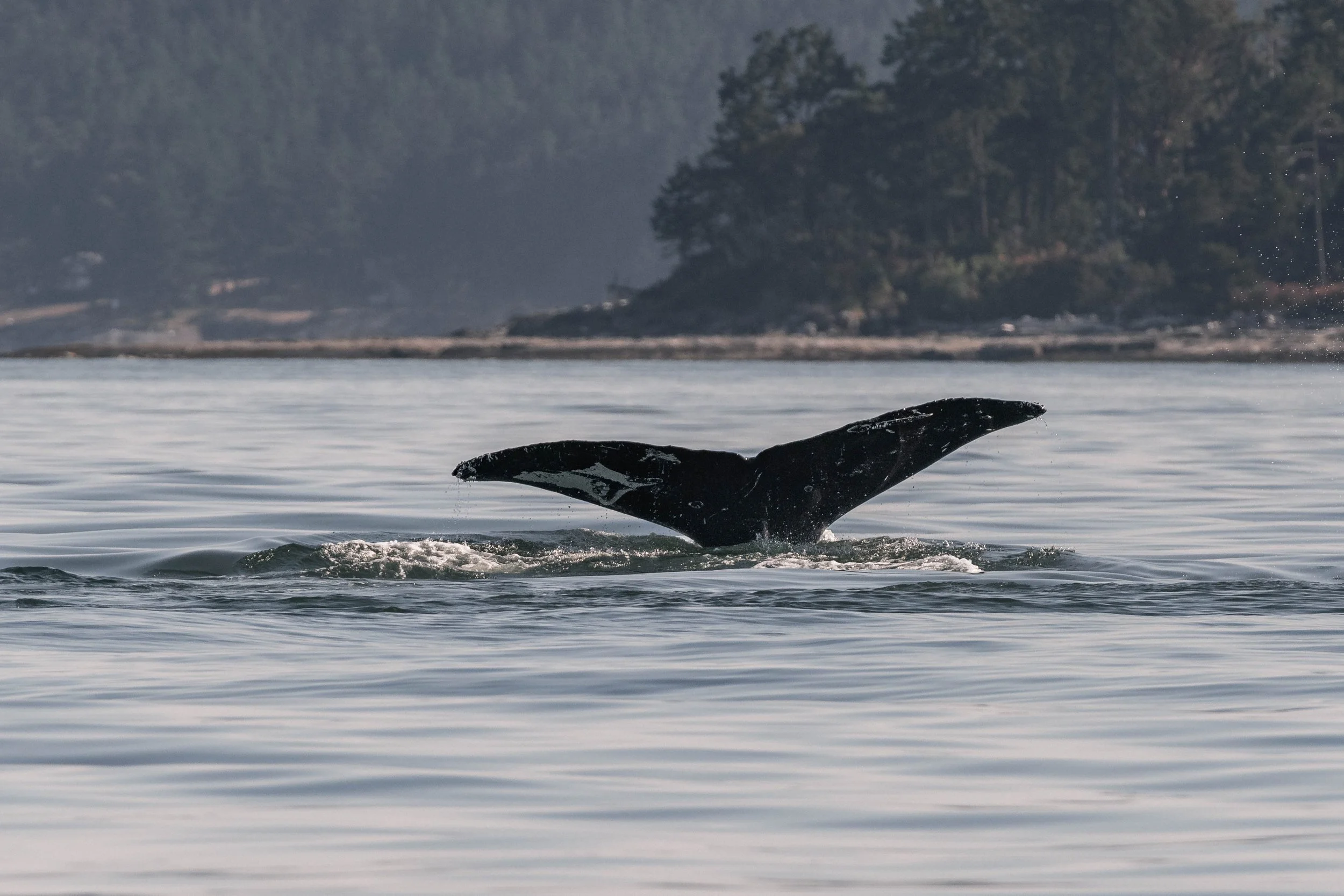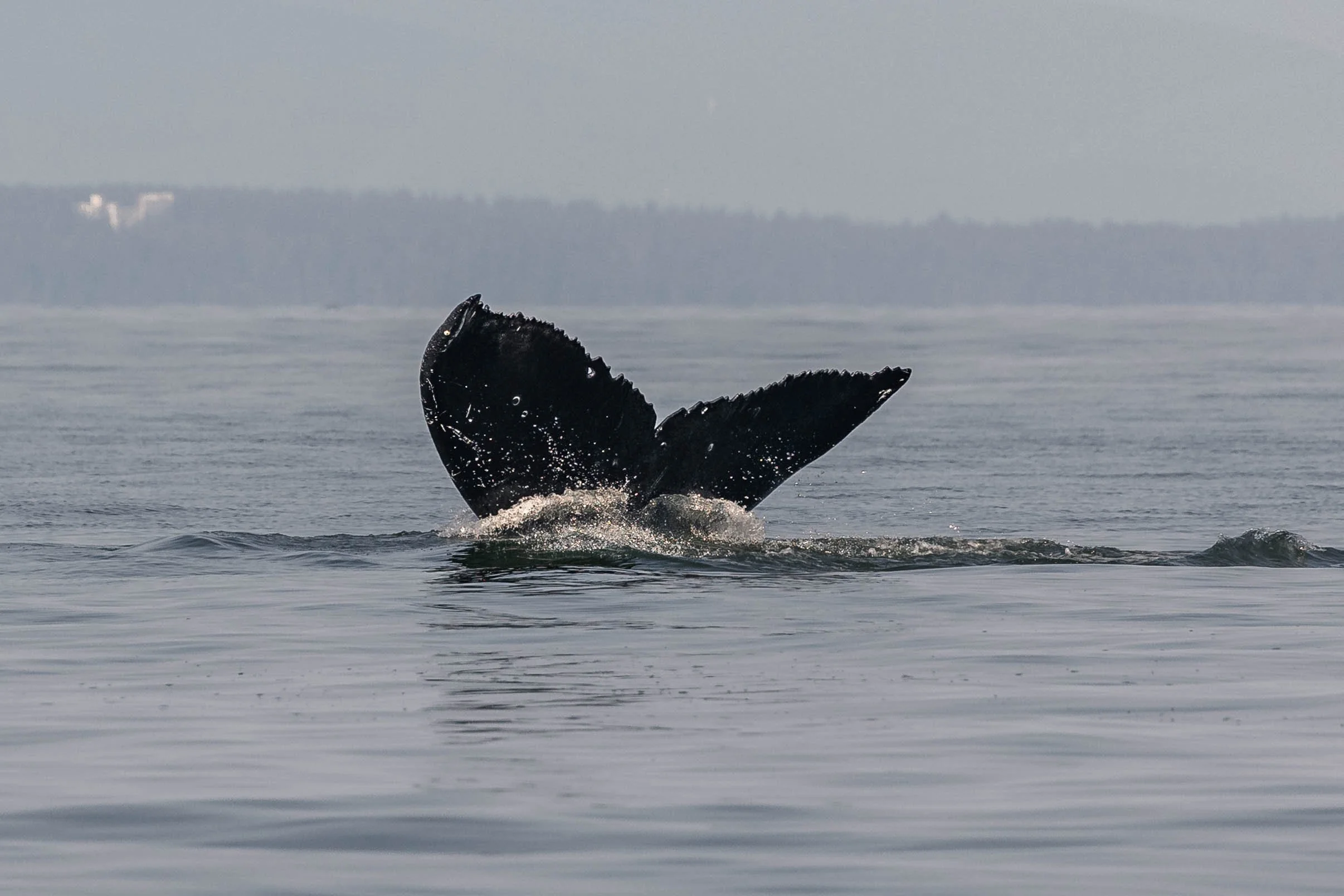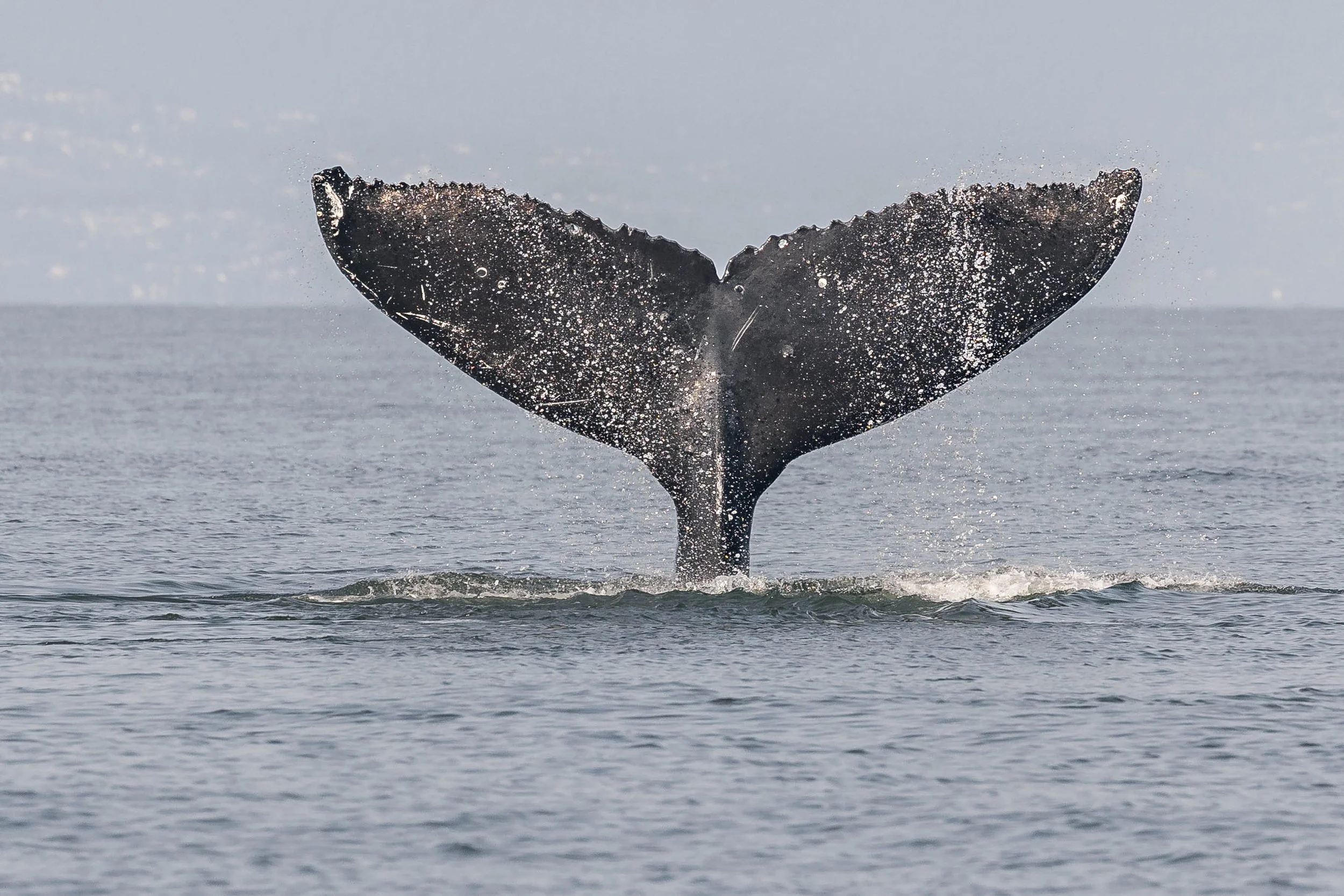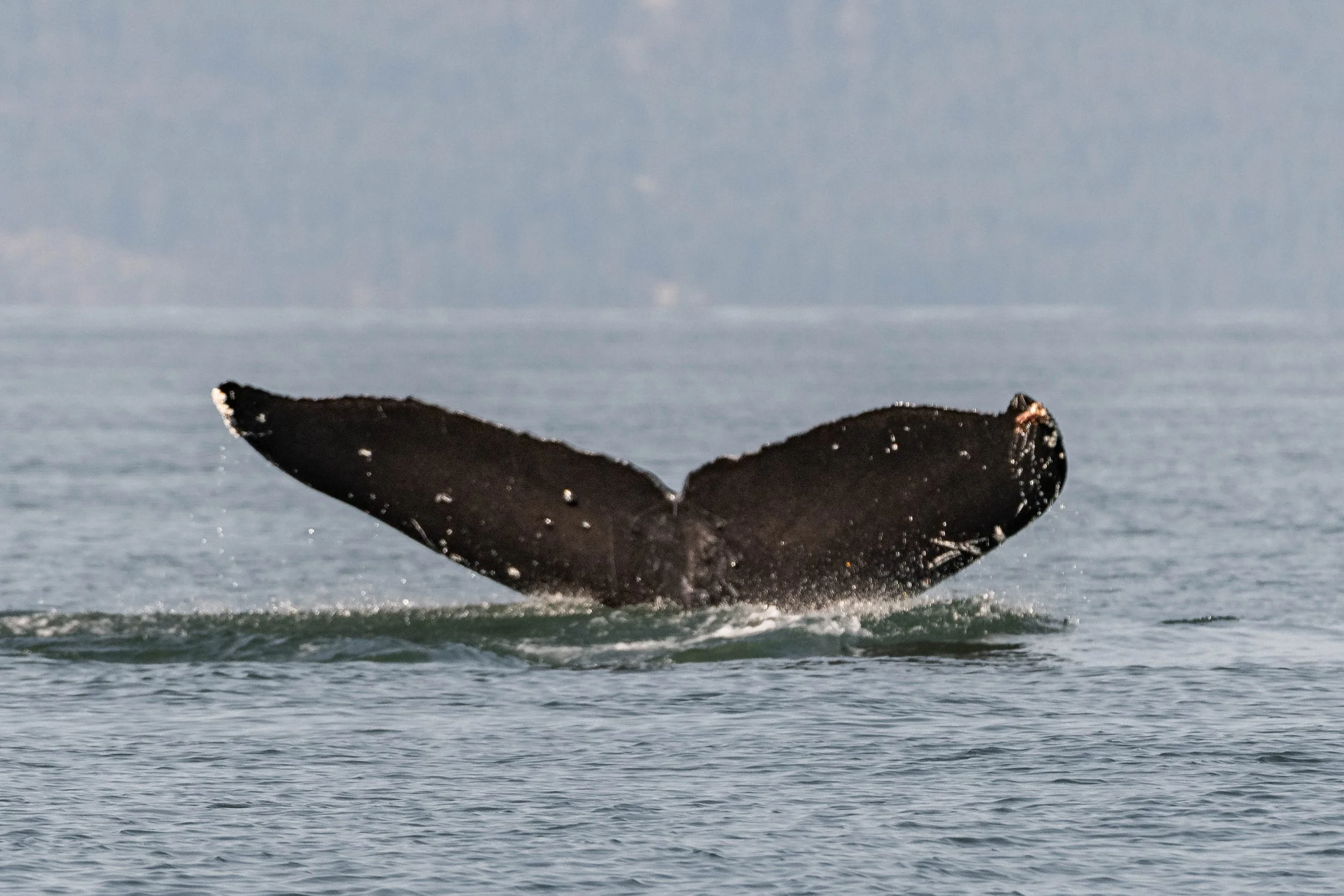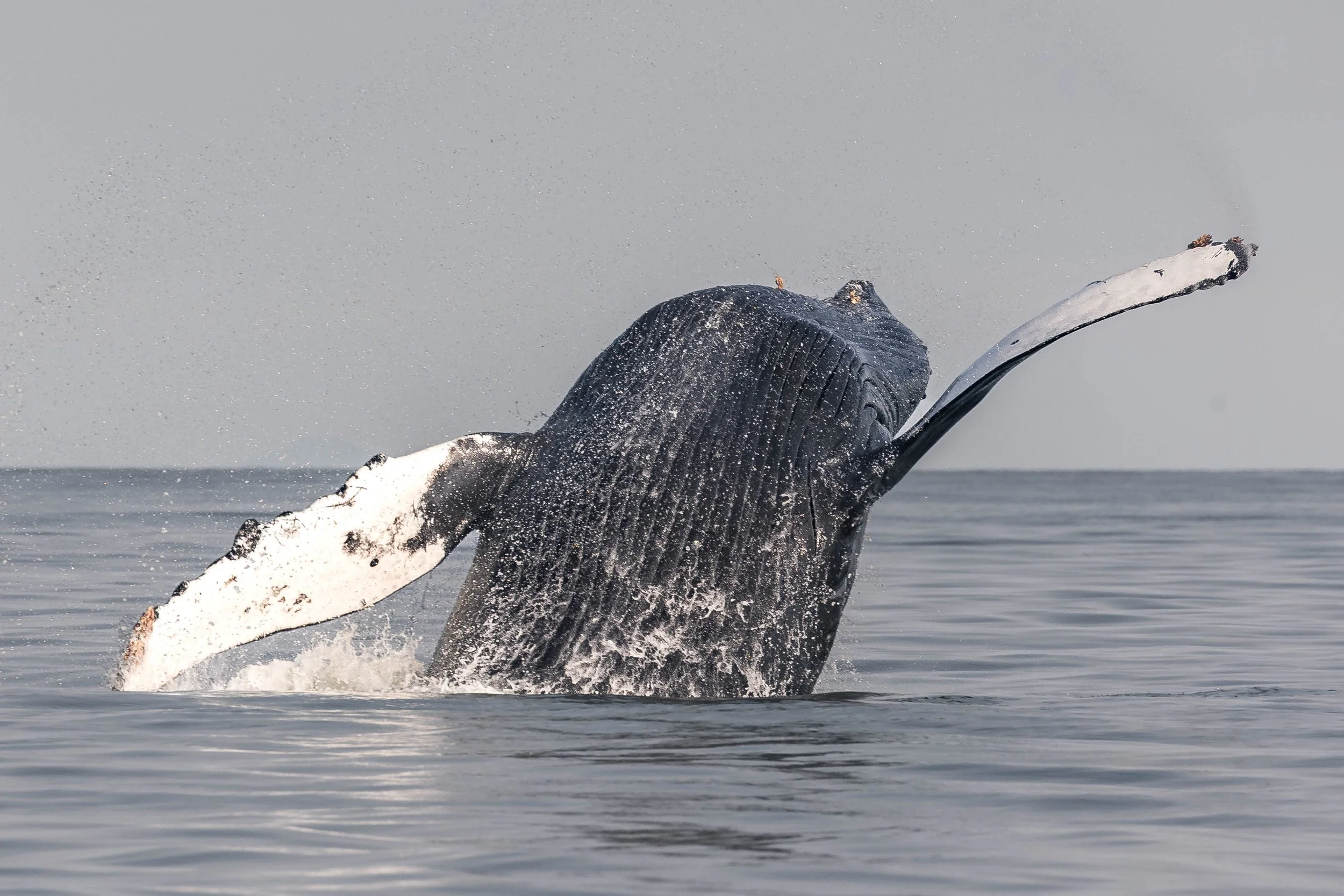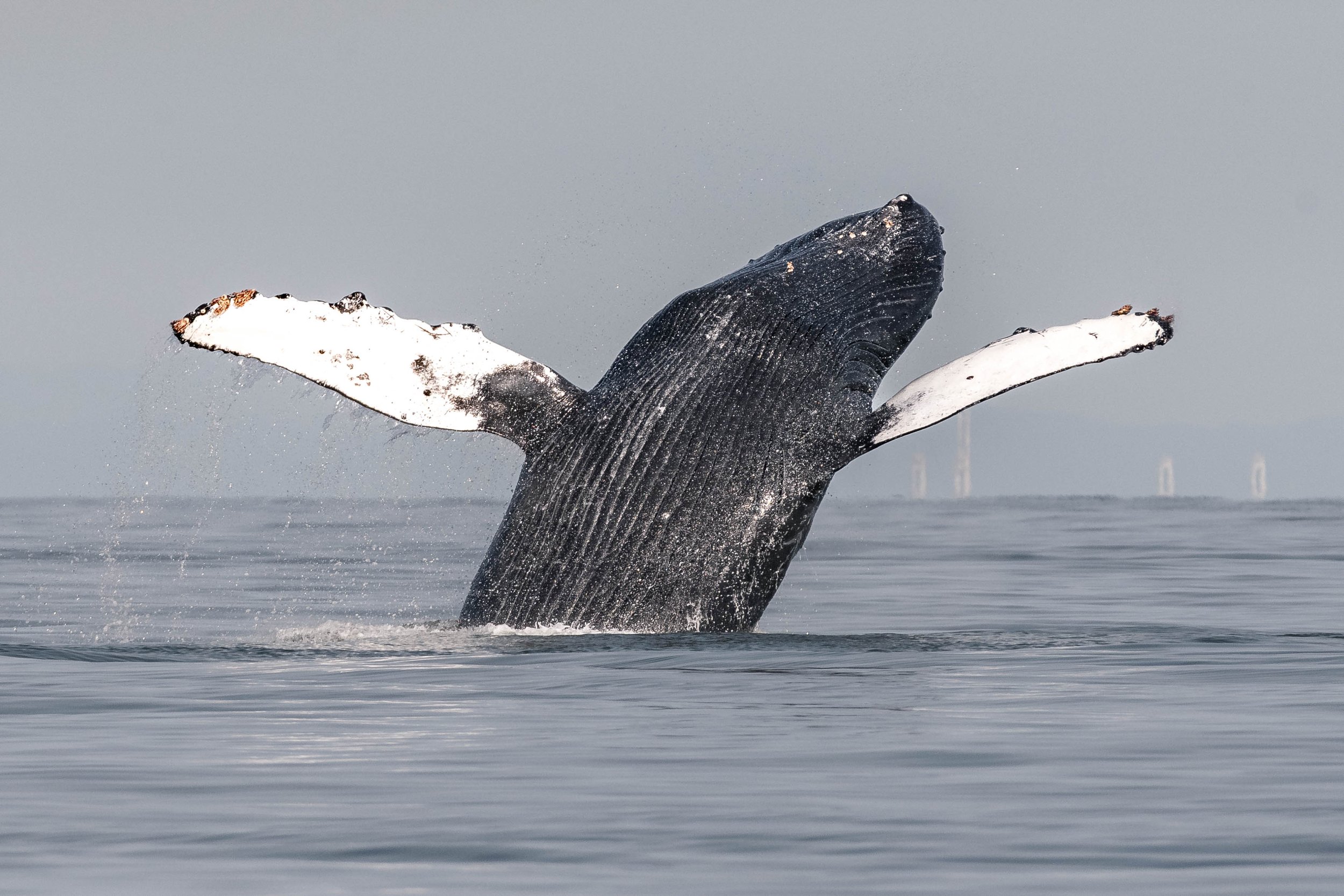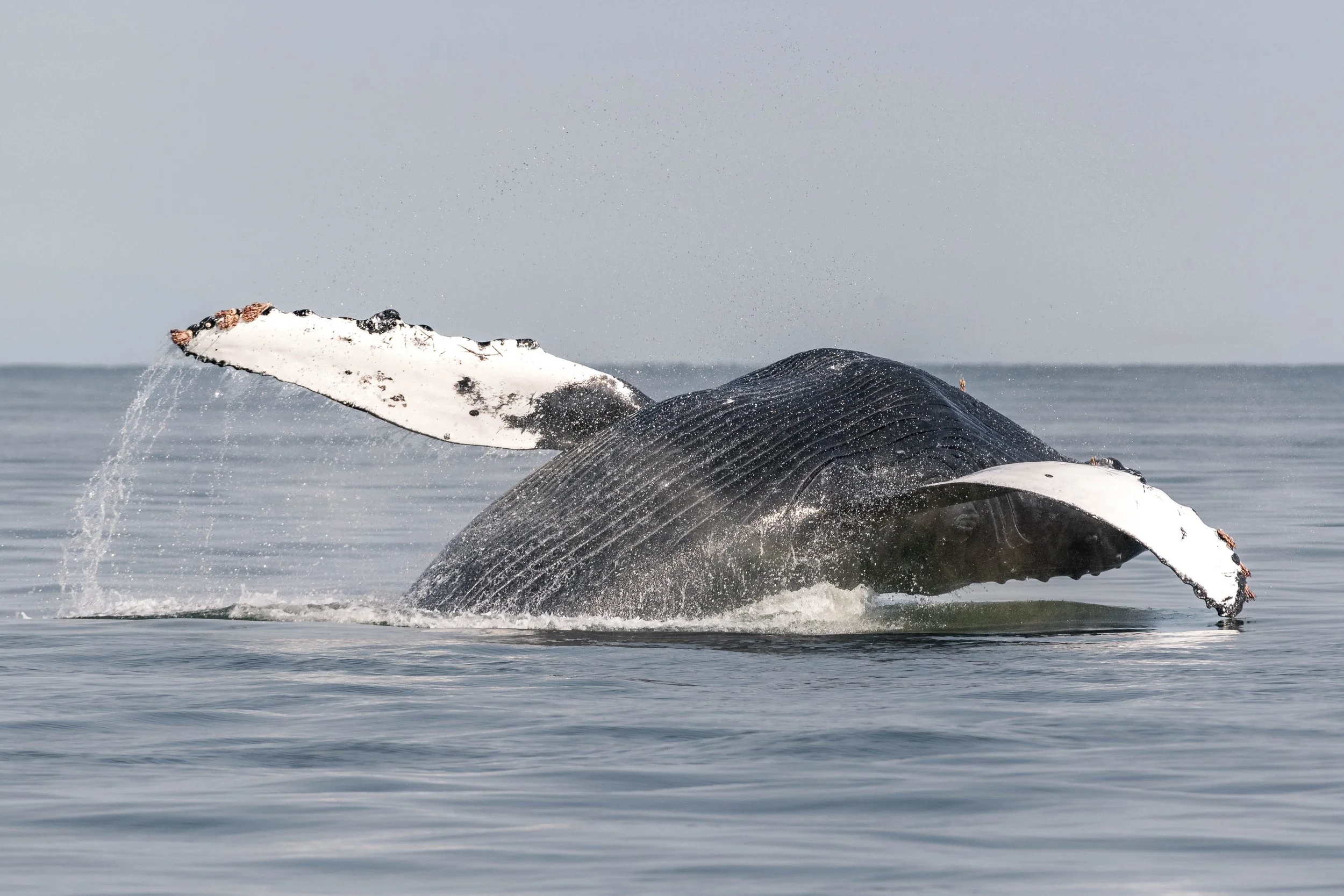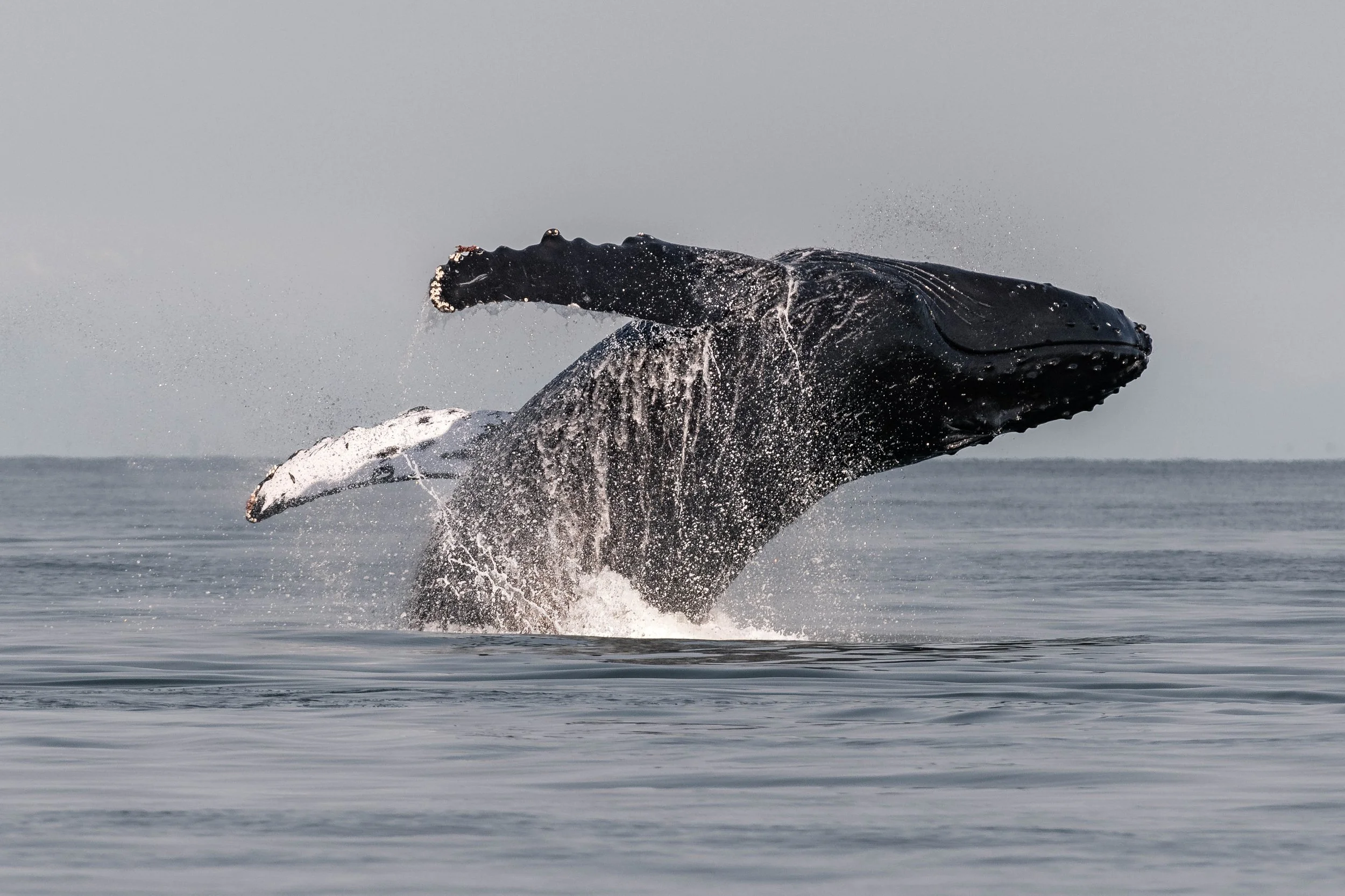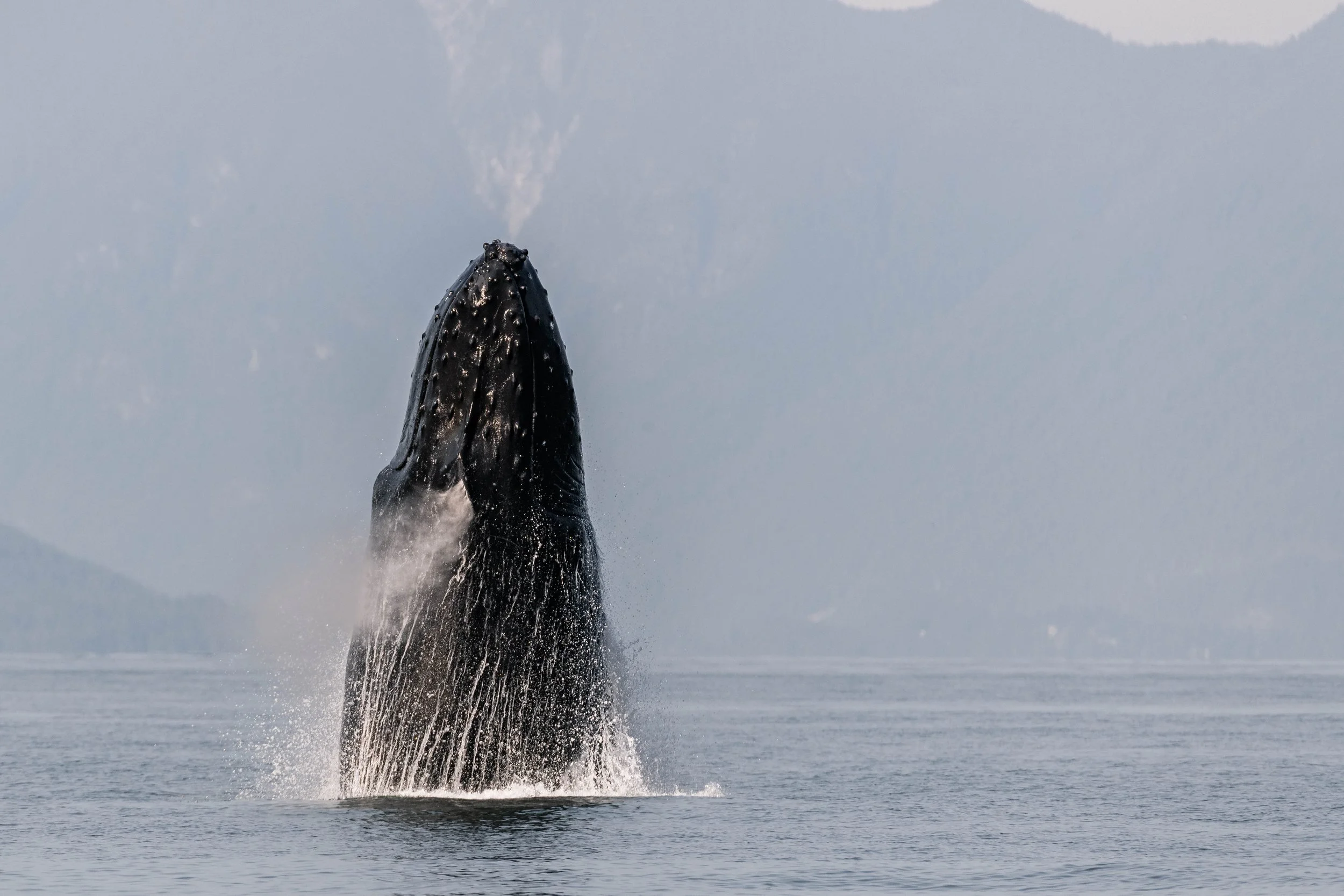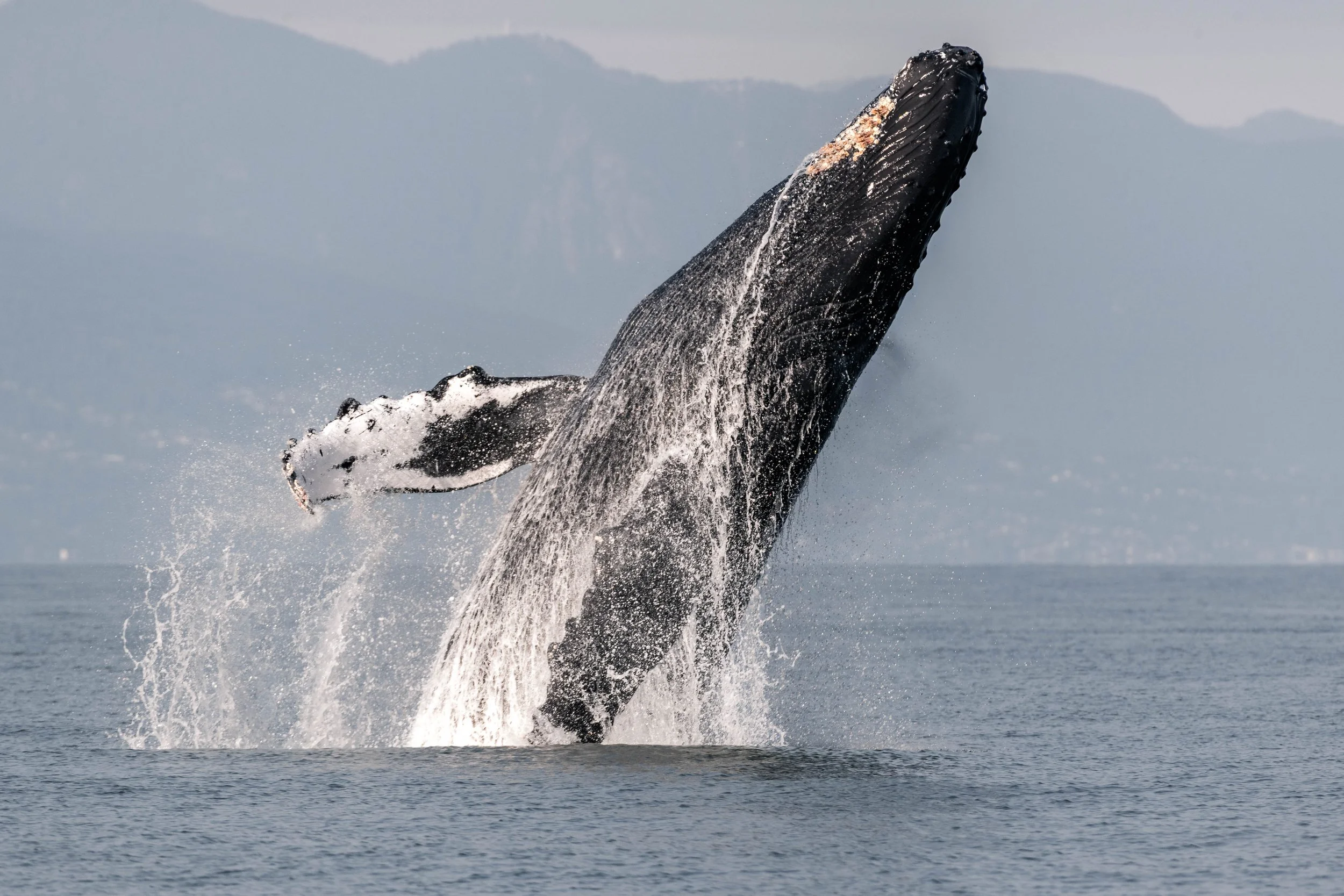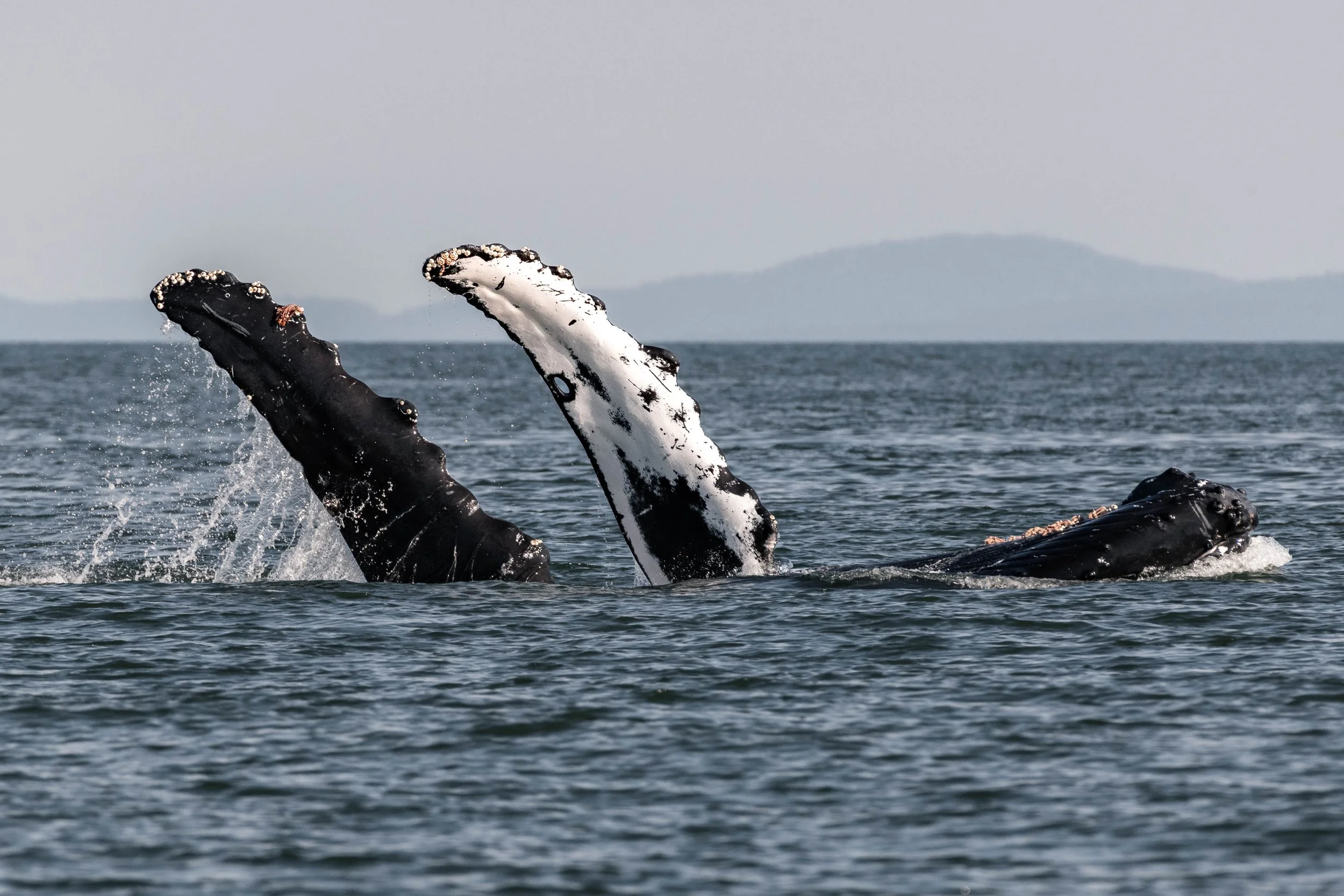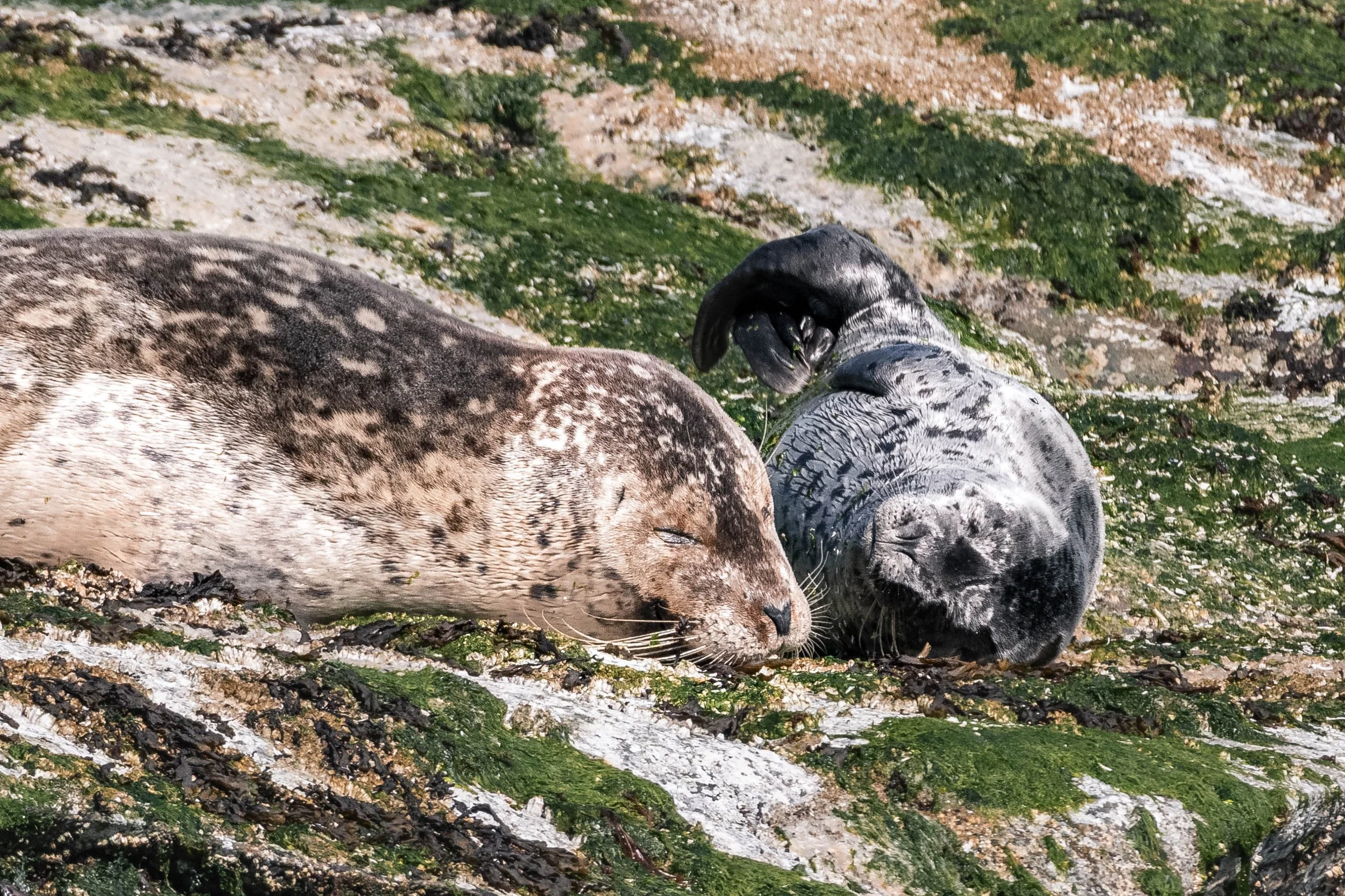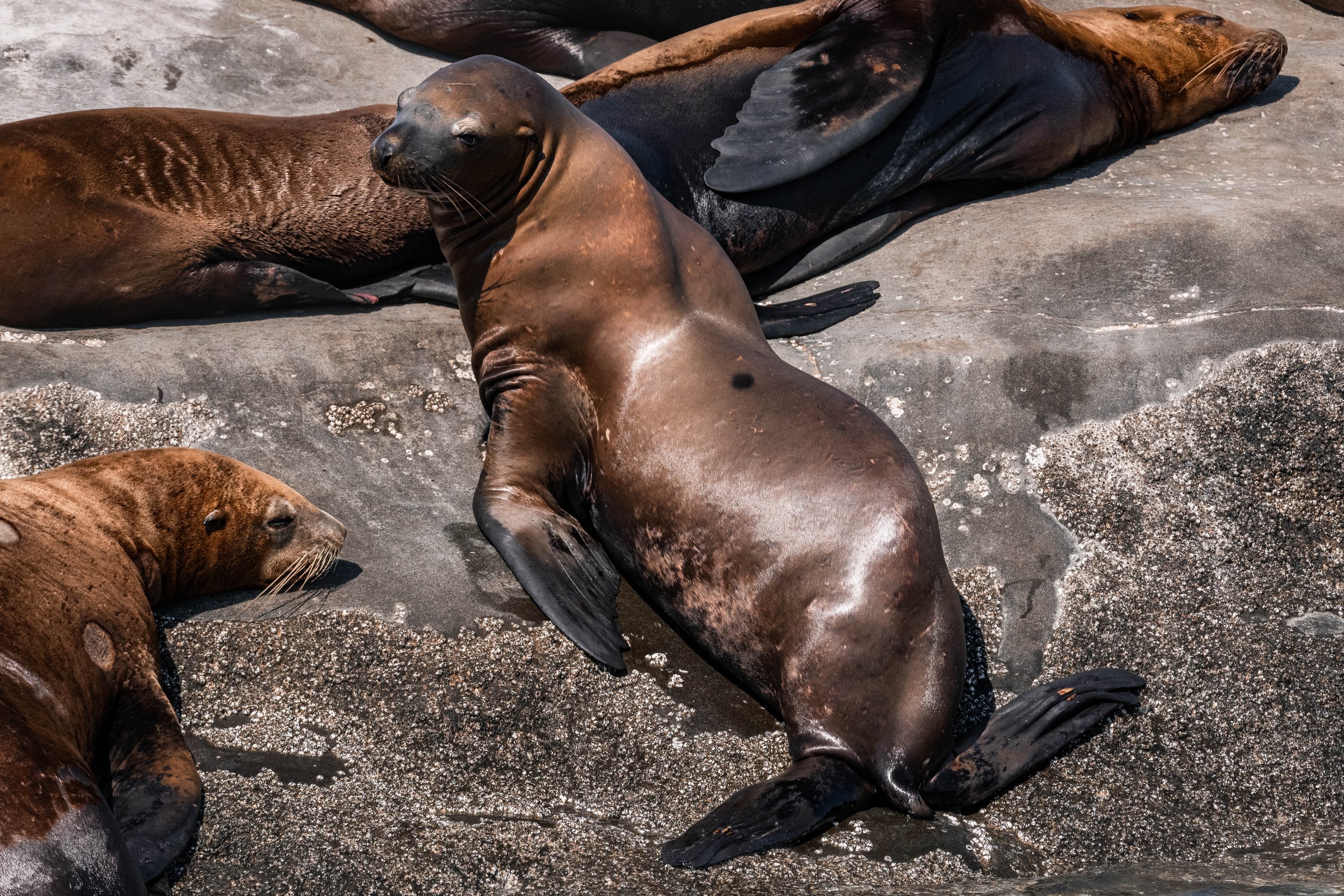July 30, 2025, 3:30 PM - Humpbacks here, humpbacks there, humpbacks everywhere!
On this sunny evening, our whole fleet left the dock! Vessels Kula, Cascadia, and Keta set off into the Salish Sea in search of some spectacular marine life!
Not long into our tour, guests aboard Keta had spotted some pinnipeds and whale blows in the distance. Our vessels stopped at a rocky outcrop off the outer shore of Valdes Island to observe some pinnipeds before continuing to the whale blows. This little shallow area is dubbed “Stinky Rocks” by those who visit. Those unfortunate enough to be downwind of the Sea Lions stationed there get to find out why the rock has this nickname! Since there are so many animals eating, sleeping, feeding, and defecating together on one small rock, the smell is as bad as you imagine it to be!
The Sea Lions hauled out on Stinky Rock are Steller Sea Lions. These are the largest species of Sea Lion in the world! Males reach upwards of 11 feet long and weigh upwards of 2500 pounds. Interestingly, this species displays sexual dimorphism, meaning males and females have distinct physical differences. Females grow to be only one-third the size of full-grown males, reaching around 800 pounds and 8 feet long. The males have developed this large stature due to intraspecific competition between competing males. During their breeding season (Late May to mid-July), dominant males will compete and defend a harem of females from other large competing males. Once a male has secured his harem, he will stay on land and defend his group from other males for the rest of the breeding season, meaning that he won’t get the opportunity to feed for upwards of 2 months! But this fast is essential for the dominant male to secure reproductive success.
Nearby, some different pinnipeds were spotted soaking up the sun. A group of Harbour Seals were nestled together with their pups! These seals are significantly smaller than the Steller Sea Lions, usually not weighing more than about 250 pounds. Harbour Seals are currently in the middle of pupping season, with many mothers and small pups being found along our coastline right now. Unlike the sea lions, Harbour Seals do not display sexual dimorphism. This means that both males and females look very similar, with no dramatic key differences.
Once our time concluded with the pinnipeds, our vessels headed over to the humpback blows that had been spotted nearby! Guests aboard Keta had found two humpback whales, and upon closer inspection of their tail flukes, it was none other than Yogi (BCY0409) and Windy (BCY0893)!
To confidently identify which individual humpback whales we have, a good photo of the underside of the tail fluke is the gold standard for photo identification. Each humpback whale develops a unique coloration of white and dark areas on its tail. This coloration, combined with damage to the tail, like notches and scratches, allows us to catalogue and compare all humpback whales. Lots of humpback whales develop scars, notches or other damage to their tail flukes as they age, mostly coming from human-related accidents. Humpback whales are particularly vulnerable to entanglement in fishing gear, mainly due to their massive size and the coastal routes they follow during migration. When a whale becomes entangled in fishing gear or marine debris, it can suffer deep wounds that risk infection or become so restricted that it eventually drowns. Entanglements and boat collisions are the most significant threats humpback whales face nowadays, but historically, these whales have endured much worse.
Humpbacks were once one of the most hunted whale species during the era of commercial whaling along the Pacific coast. Their relatively slow swimming speed and their migration path made them easy prey to commercial whalers. By the time commercial whaling had been stopped in the 1960s and 70s, the damage had already been done. It’s estimated that the northern-pacific humpback population had declined by 90%. Thankfully, protective measures like the Marine Mammal Protection Act have made it illegal to hunt or capture these animals, allowing their populations to recover slowly. Today, regulations such as public awareness, reduced speeds while in the presence of whales, and measures to reduce ocean pollution help protect our humpbacks. Additionally, whale sighting reports are shared with large commercial ships and ferry operators to help minimize the risk of vessel strikes and improve safety for both whales and mariners.
While our passengers aboard Keta enjoyed the presence of Yogi and Windy, our other vessels had also spotted some whales off in the distance. Passengers aboard Cascadia had spotted four humpback whales, including a mother and her calf! When Kula arrived shortly after, the group had split up, and they began to watch the mother and her calf by themselves.
The humpback whales were identified to be Orion (BCX1251), Smoke (BCX2183), Kappa (BCX0158) and her 2025 calf! Humpback whale calves stay with their mom for their first year of life. These calves will be born down south in their breeding ground and will nurse off their mothers' rich and fatty milk to build their fat stores and start to grow. Once the winter wraps up and the waters begin to warm up, the mother and calf will head to their more polar feeding grounds to seek out krill, small fish or copepods (small invertebrates). Kappa would have given birth down in her breeding ground around Hawaii, where that calf would have nursed for 5 months or more. While a mother humpback is nursing, she can lose upwards of 17% of her total body weight while the calf gains a crazy 395% over the same period! Once winter approaches and the water temperatures begin to drop, these highly migratory humpback whales will make their way back down south to the same breeding grounds. Once a mother and calf venture south and reach their breeding grounds together, the calf will leave its mother and set off on its own!
Once our vessels wrapped up their time with their humpbacks, they continued on their search for more whales. Off in the distance, some whale-sized splashes had been spotted! Upon arriving on the scene, it was identified that Professor X/Abyss (BCX1965) was breaching up a storm! Professor X was showing off some of her extravagant aerial displays and was also observed slapping the surface of the water with her pectoral fins. As we watched, another whale excitedly began breaching with her - this was Kappa’s 2022 calf (BCX0158 calf 2022)! As our vessels enjoyed watching this cool behaviour, some more humpback whales appeared. Bullet (BCX1658) and Nike (BCX1377) had also been spotted hanging around the area.
Our vessels briefly stayed with Professor X, Kappa’s 2022 calf, Bullet and friends and then departed to make their way back to the dock!
See our photos below, taken by our Marine Naturalists Vanessa Vereschahen, Hayleigh Hilbert, and Aly Kohlman.
Left to right: Smoke, Orion, and Kappa. Photo by Aly Kohlman.
Orion’s fluke. Photo by Aly Kohlman.
Smoke’s fluke. Photo by Aly Kohlman.
Kappa’s fluke. Photo by Aly Kohlman.
Smoke diving with Orion behind them. Photo by Aly Kohlman.
Yogi’s fluke. Photo by Hayleigh Hilbert.
Windy’s fluke. Photo by Hayleigh Hilbert.
Kappa and her calf. Photo by Hayleigh Hilbert.
Kappa fluking, with a tiny corner of the calf’s fluke visible too. Photo by Hayleigh Hilbert.
Kappa’s 2022 calf’s fluke. Photo by Hayleigh Hilbert.
Water rushing down Kappa’s 2022 calf’s fluke. Photo by Hayleigh Hilbert.
Professor X’s fluke. Photo by Aly Kohlman.
Breach for the sky! Photo by Hayleigh Hilbert.
Professor X coming in for a landing. Photo by Hayleigh Hilbert.
Kappa’s 2022 calf joining in the breachapalooza. Photo by Hayleigh Hilbert.
Someone is looking very plump! Photo by Hayleigh Hilbert.
Look at that wave! Photo by Hayleigh Hilbert.
An elegant angle from Professor X. Photo by Hayleigh Hilbert.
Fully spread out, our humpbacks have an impressively wide ‘wing’ span! Photo by Aly Kohlman.
Flopping back down. Photo by Aly Kohlman.
Look at that angle! Photo by Aly Kohlman.
Pecs up - together! Photo by Aly Kohlman.
A big blow as they break the surface of the water. Photo by Aly Kohlman.
Professor X with both of her pecs up - we can ID her from this angle due to the whole in her pec! Photo by Aly Kohlman.
She is beauty, she is grace! Photo by Aly Kohlman.
Launching out of the water, with streams of water cascading down them. Photo by Aly Kohlman.
A wave from Professor X. Photo by Aly Kohlman.
Pecs up with Professor X, with her chin visible too! Photo by Aly Kohlman.
Nike, Bullet’s friend. Photo by Hayleigh Hilbert.
Bullet’s fluke. Photo by Hayleigh Hilbert.
A Harbour Porpoise zipping by. Photo by Aly Kohlman.
A Harbour Seal mother and pup, napping together. Photo by Aly Kohlman.
A Harbour Seal with a tumor on its eye. Photo by Aly Kohlman.
A nursing Harbour Seal pup. Photo by Aly Kohlman.
Fighting amongst the Steller Sea Lions. Photo by Vanessa Vereschahen.
Posing on the rocks. Photo by Aly Kohlman.
Roaring away while another tries to nap. Photo by Aly Kohlman.



